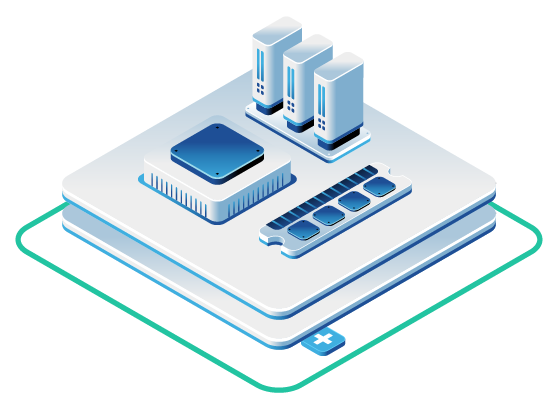
Biomedical research teams are increasingly turning to advanced natural language processing (NLP) models to unlock insights from the vast biomedical literature. One such model, BioGPT, is a domain-specific generative AI trained on sources like PubMed and other medical texts. BioGPT can summarize scientific papers, extract key relationships, generate research hypotheses, and even help prioritize potential drug targets from troves of unstructured data. This capability makes it a powerful “research assistant” for biotech and pharmaceutical teams, who often grapple with information overload in journals and databases. However, deploying a model like BioGPT in practice is not trivial – it requires significant computing power and must be handled with care due to the sensitive nature of biomedical data.
Challenges of Cloud Deployment for Biomedical use cases
A major hurdle in using large NLP models in healthcare and pharma is data privacy and compliance. Biomedical data (such as patient information or proprietary research findings) is often regulated under laws like HIPAA in the U.S. and GDPR in Europe. Sending such data to a public cloud service or third-party API can be a non-starter – it might violate patient privacy rules or data residency requirements, and it risks exposing valuable intellectual property. Cloud-based NLP APIs present compliance and IP leakage risks. For example, a research team uploading confidential clinical notes to an external NLP service could inadvertently breach regulations or lose exclusive control of their data. There are also reliability and performance concerns: public cloud GPU services can come with throttling, unpredictable performance, and limited control over the environment. In sectors like healthcare and scientific research, where data locality, strict privacy, and infrastructure control are critical, traditional public clouds often fall short. These challenges drive the need for a more secure, self-controlled deployment approach for models like BioGPT.
Private GPU Clouds as a Solution
Deploying BioGPT on a private cloud with dedicated GPU servers offers a compelling alternative that sidesteps the above concerns. In a private cloud setup, the organization’s data and compute are completely isolated from others, providing an environment under your full control. OpenMetal’s on-demand private cloud infrastructure is one example that has been designed with these needs in mind. It allows teams to host BioGPT on dedicated GPU hardware within a single-tenant cloud, so data never leaves the organization’s trusted boundary. Below, we detail how such an approach addresses compliance and security requirements:
Data Residency & Compliance
A private cloud lets you choose where your data lives. OpenMetal, for instance, offers deployments in multiple regions (U.S. East, U.S. West, EU, and Asia) so you can ensure all data stays in a specific country or data center to meet residency laws. The cloud software (built on OpenStack) can be configured to meet regulatory standards like HIPAA and GDPR. In fact, organizations can implement the same security controls and policies that enable HIPAA-compliant cloud setups on OpenStack. OpenMetal’s hosting facilities also carry certifications (SOC 1/2/3, PCI-DSS, NIST 800-53, HIPAA, ISO 27001, etc.), indicating they meet strict security and privacy requirements at the physical and operational level. This compliance-ready foundation simplifies the process of passing audits and safeguarding sensitive health data.
Encryption Everywhere
In a private cloud, data can be encrypted both at-rest and in-transit by default. The OpenStack platform provides native tools for this – for example, volumes can be encrypted with strong AES-256 encryption (using Cinder), and all network traffic can be secured via TLS/SSL. Key management services like Barbican allow organizations to hold and control their own encryption keys. These measures ensure that even if someone were to access the storage or intercept network data, the information remains unreadable without the proper keys. Encryption, combined with strict access controls, forms a robust defense in a biomedical context where protecting patient-identifiable information and research data is paramount.
Network Isolation
A hosted private cloud provides networking that is isolated for your organization’s use only. In OpenMetal’s design, for example, your cloud runs on its own VLANs and software-defined networks that prevent any outside or third-party access by default. You can build multiple virtual private clouds within your environment, each with its own segregated networks, routers, firewalls, and VPNs if needed. This network segmentation means an extra layer of security – even other customers or projects cannot “sniff” or interact with your BioGPT deployment. The lack of “noisy neighbors” is a significant benefit: your GPU servers aren’t shared with strangers, eliminating the risk of cross-tenant data leakage and performance interference. In essence, the private cloud operates as an extension of your internal network, with full control over inbound/outbound access rules.
Full Control & Governance
With a private cloud, your team has root-level control over the entire stack, from the operating system to the machine learning frameworks. This allows implementation of organization-specific security policies and governance. OpenStack’s audit logging can track every action in the cloud for compliance reporting. If needed, you can integrate compliance tools or monitoring agents at the OS level – capabilities often restricted or impossible in managed public services. This control extends to deciding when to apply updates or patches, tailoring the environment for specialized applications, and ensuring that nothing happens without your oversight. Such granular control is crucial in regulated industries: it means you can confidently certify the environment’s security since you manage it end-to-end (with support from the provider as needed).
Strategic Advantages of In-House Deployment
Beyond compliance, hosting BioGPT on an in-house private GPU cloud offers strategic technical benefits that can accelerate biomedical projects:
High Performance & Low Latency
BioGPT is a large model, so inference speed and responsiveness depend on the underlying hardware. By using dedicated high-end GPUs (like NVIDIA A100 or H100), organizations can achieve low-latency inference without the bottlenecks often encountered in shared cloud platforms. There is no virtualization overhead – you are running on bare metal, directly harnessing the full power of the GPU for maximum throughput. This is especially important for interactive applications (e.g. a clinician’s assistant querying literature in real-time) or high-volume pipelines processing thousands of abstracts. The private network connectivity between your data sources and the model is also high-bandwidth and local, which further reduces latency compared to sending requests across the public internet. In short, an on-premise-like setup ensures BioGPT delivers answers quickly and reliably, enabling smooth user experiences in tools built on it.
Ability to Retrain and Fine-Tune
Another key advantage is the freedom to retrain or fine-tune BioGPT on proprietary data. Because you control a full GPU-equipped environment, you can load your own datasets (e.g. internal experimental results, proprietary chemical libraries, or confidential clinical data) and fine-tune the model to better fit your domain. This is done without exposing any data to an external service. OpenMetal’s platform is explicitly designed to enable both high-speed inference and model retraining in-place. For example, a pharmaceutical company might fine-tune BioGPT on its internal research papers to create a custom model that excels at answering questions specific to their therapeutic area. This in-house training capability means your AI models can continuously improve and adapt, yielding competitive advantages in research. It’s a stark contrast to many hosted AI services where you’re restricted to using the model “as-is” or must send data off-site for fine-tuning.
Full Stack Flexibility
Hosting BioGPT yourself grants full control over the software stack and integration. You can choose any ML framework, customize libraries (for example, install specific versions of PyTorch or biomedical text processing libraries), and optimize GPU utilization as you see fit. This flexibility extends to deploying the model how you want – be it a standalone service, a microservice in a larger application, or an offline batch processor. The environment can integrate with your existing IT infrastructure: connect securely to your databases, use your authentication systems, and log outputs to your monitoring tools. Moreover, having full stack control means you can implement advanced architectures (such as multi-GPU distributed inference or connecting BioGPT with other in-house tools) without needing permission from a cloud vendor. The result is an NLP platform tailored exactly to your team’s needs and policies, something not achievable in one-size-fits-all cloud services.
Predictable Costs and Scaling
Running on a dedicated private cloud can also offer cost predictability for budgeting purposes. Public cloud GPU instances are notorious for high hourly costs and charges for data egress (downloading data) or API calls. In a private cloud model, especially OpenMetal’s, pricing is transparent and typically monthly-flat – with no hidden usage fees or surprise egress costs for moving data internally. This means an IT department can provision a powerful GPU server (or cluster) and know the fixed cost, enabling easier cost-benefit analysis for projects. Additionally, if more capacity is needed, you can scale by adding more GPU nodes to your private cluster. Because it’s all under your control, scaling up or down is on your terms, and you’re not beholden to the availability issues or multi-tenant quotas of a public provider. This makes planning large training runs or accommodating new project demands much more straightforward.
Architectural Highlights: OpenMetal Infrastructure for BioGPT
To paint a concrete picture, here are some of the infrastructure components and how they fit together when hosting BioGPT on OpenMetal’s private cloud:
Dedicated GPU Nodes
OpenMetal provides on-demand single-tenant GPU servers equipped with state-of-the-art accelerators like NVIDIA A100 and H100 GPUs. Each GPU node is bare metal (no virtualization), giving you direct access to the hardware’s full performance. You can deploy a single GPU server for a pilot, or create a cluster of GPU machines for scaling out training and inference workloads. These servers can be integrated into an OpenStack-powered private cloud cluster, meaning they work seamlessly with virtual CPU instances and other resources in the environment. For instance, you might have several CPU-only VM instances handling web services or data preprocessing, all communicating on the same private network with the GPU servers that run the BioGPT model. The fact that the GPUs are fully dedicated to you ensures consistent performance with no contention. (In contrast, many public clouds use time-sliced or multi-tenant GPUs, or they may preempt your job if you’re on a lower priority tier.)
Ceph Storage Cluster
Any AI model deployment needs robust storage for datasets, model checkpoints, and results. OpenMetal’s private clouds leverage Ceph, an open-source, distributed storage system, to provide high-availability storage within the cluster. Ceph can handle object storage, block storage, and even file storage from a single unified system. In practice, this means your large collection of scientific articles, training data, and model files can reside on a Ceph storage cluster that is part of your private cloud. Ceph is known for its reliability and scalability: it replicates data across multiple drives/nodes, can take snapshots, and even perform erasure coding for efficiency. An added benefit is that Ceph speaks an S3-compatible API, so if your team’s tools are built for Amazon S3 or other object stores, they will work out-of-the-box with your private storage. This gives you cloud-like storage elasticity and integration, but entirely within your controlled environment. Storing biomedical data on Ceph inside the OpenMetal cloud keeps it local (for fast access) and encrypted (for safety) while still being easily accessible to your BioGPT servers. You avoid the egress fees and compliance uncertainty of using external storage services since everything stays on the private cluster.
Kubernetes and Container Orchestration
Modern AI workflows often rely on containerization (Docker containers) to package models and services for easy deployment. OpenMetal’s infrastructure supports running Kubernetes on top of the OpenStack-powered private cloud to orchestrate these containers. OpenStack and Kubernetes work in tandem: OpenStack manages the VMs/servers and networking, while Kubernetes handles the application layer (containers) on those resources. In practical terms, you could deploy a Kubernetes cluster that spans multiple VM instances or bare-metal nodes in your OpenMetal cloud, and then run BioGPT as a containerized service within that cluster. This setup brings the benefits of cloud-native architecture—like autoscaling, load balancing, and easy rollouts—to your private environment.
For example, if your BioGPT-backed application experiences a surge in usage, Kubernetes can automatically launch additional container replicas (on your GPU nodes) to handle the load, then scale down when the load subsides. All of this happens behind the scenes on hardware you control, with no exposure of data to an outside cloud. Using container orchestration also makes it simpler to integrate BioGPT with other microservices (such as a web frontend, or a database API) and to deploy updates (like a new model version) with minimal downtime. Essentially, you get the flexibility of cloud-native deployment without sacrificing security – the best of both worlds for IT teams supporting biomedical researchers.
Conclusion
Hosting BioGPT on a private GPU cloud offers a strategic balance of innovation and control for biomedical IT teams. Researchers get access to a state-of-the-art NLP model that can accelerate discoveries – from faster literature reviews to intelligent hypothesis generation – without compromising on data privacy. Meanwhile, IT retains full oversight of data, security, and compliance, building trust with stakeholders (e.g. clinicians, patients, or R&D directors) that sensitive information is protected.
OpenMetal’s dedicated GPU infrastructure exemplifies the kind of platform that makes this possible: it delivers the raw horsepower of NVIDIA GPUs, the reliability of enterprise-grade storage, and the flexibility of open-source cloud software, all in a single-tenant environment. The low-latency performance, ability to fine-tune models on proprietary data, and comprehensive control over the stack mean organizations can tailor BioGPT to their unique needs and workflows. For IT professionals supporting biomedical teams, this setup provides a clear path to harness cutting-edge AI while meeting strict regulatory and ethical requirements. In an era where AI capabilities are advancing rapidly, such a private cloud approach ensures that healthcare and life sciences organizations can innovate securely, maintain compliance, and ultimately drive better outcomes in research and patient care.
GPU Servers & Clusters Catalog
Questions? Schedule a meeting or start a chat.
Note: We would like to make this article as comprehensive and accurate and possible. If you have any suggestions for improvements or additions please feel free to send them over to marketing@openmetal.io.


































